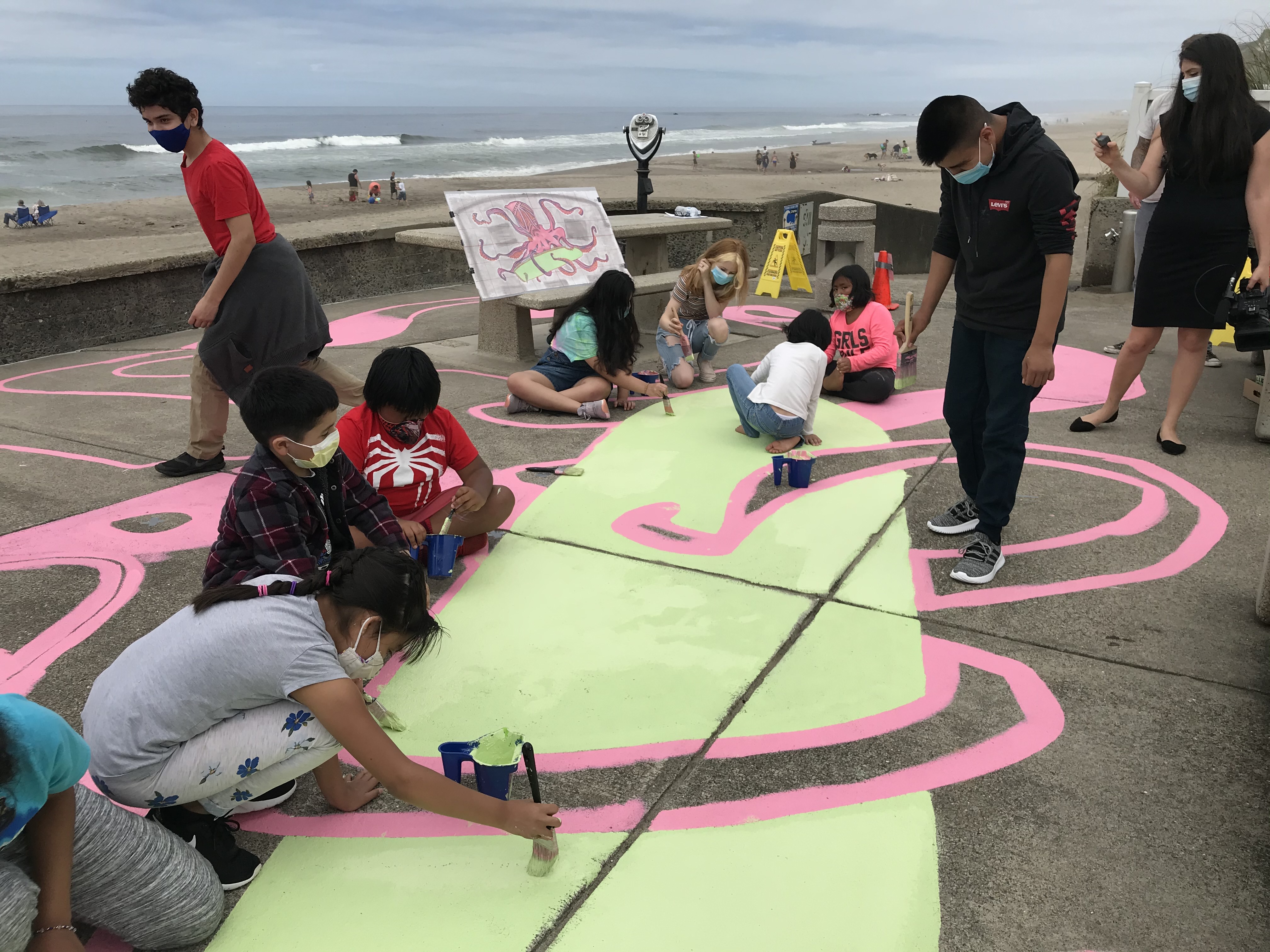This fellowship came at a time of personal and professional transition in my life. I had a desire to take my art disciplines and create projects that would engage intergenerational communities in serving youth. Spiritually, I was called to create more silence and peace in my life to explore my identity as an artist. Prior to the fellowship, I worked seven days a week juggling my responsibilities as a single mother and work roles of social worker, executive director, spiritual director, death doula, arts teacher, music therapist, and choral director. With my responsibilities and schedule, I had no time to create as an individual artist. I dreamed of composing more music and creating community arts events for youth.
My first year as a Fellow was dedicated to building community alliances, finding urban resources and bringing them into rural places, using the arts as a tool and platform to activate social transformation, and supporting a local identity that is culturally affirming to all the people who live here.
In my fellowship application, I proposed building the Oregon Children’s Music Festival, the Lincoln City Youth Choir, and composing a musical called, “The Girl with the Magic Skin.” In the first year, I accomplished all three proposed projects. I knew this was a once-in-a-lifetime opportunity for me, so I worked to stack the deck in my favor in preparation for the final year of my fellowship. My goal was to build projects that I could continue to build upon for my future.

Oregon Children's Music Festival, photo by Benji Vuong.
Leadership and the opportunity gap
To address the opportunity gap, I knew I had to work with local leadership. In the first year, I researched the schools, community resources, and all the arts nonprofits in my area. I learned the biases of the people that live in my rural area and talked with people and groups that felt excluded in Lincoln City.
I also looked at how the arts are implemented in the community and who funds the programs. The how and who gave me insight into what I could offer as an individual artist. I learned the barriers of art-making in my community and learned how kids were engaging in the art-making process. I wanted to create arts spaces where kids felt a sense of belonging, a place where they could be challenged to grow, and spaces where they could practice being of service in the community.

Mural painting at Nelscott Beach. Photo by Activate Arts.
Gaining access and pushing for change
As an individual artist, receiving these funds was huge in terms of interrupting and creating social change in my rural town. It opened doors for me that would never and have never been open to me. This fellowship granted me access.
After the success of the Oregon Children’s Music Festival and the community partnerships I made, my work gained the trust of the leadership in Lincoln City. I now had the people I was serving in the gap along with the leadership and was ready to have a second festival and build connections across the central Oregon coast. Then the pandemic hit, and all my work stopped and contracts ended.

"Vibrations" mural in Lincoln City. Photo by Activate Arts.
From grief came creativity
All my art had involved community gatherings. My trip to Carnegie Hall was canceled. I was not allowed in the prison, not allowed to see the elders I serve. The schools I serve were closed, all my concerts and fundraisers were canceled, and the festival was canceled because public parks were closed. I was devastated. I had to reallocate my fellowship money to pay bills and pivot quickly in my art.
I have experienced much loss in my life. When I am in a grief space, I turn to where I find the most joy, and that is being Alberta’s mom. During the beginning of the pandemic, I read a "Pete the Cat" book to my daughter, where Pete the Cat put a painting on top of his mom’s car so he could share his art with his friends. Alberta pointed at Pete’s painting on top of his mom’s car and asked, “Mom can we do that?” I said yes. Working with my daughter on this project moved me out of my sadness and into a creative space. My daughter and I created a project called, "Love Parade." As the whole world was focused on death, my daughter and I focused on art and joy. In those moments of making projects with my daughter, I asked myself questions like: What can I do right now? What have I been afraid to do in life? How can I use my life to love others right now?
In past interviews, I was often called an arts activist. The pandemic slowed me down to reflect on my work and who I was as an artist. Because of the fellowship, I realized how important individual artistry was in community and how the resources for individual artists are limited.
I decided to start a grassroots nonprofit that supports individual artists and guides them in art activism. I needed access to a 501(c)3 to continue my community arts projects in Oregon. Individual funding is rare, but I can use this platform to create some organization around individual arts makers in the community.
This was scary to me. I previously served others on the back-end and was not a front-facing artist. This fellowship pushed me to recognize myself as an individual artist and step into the light in ways that make me uncomfortable at times. I am incredibly grateful because, without that support, I would not have taken the risks I have taken during the pandemic.
Advice for future fellows
Practice speaking to non-artists about art. When the gap feels too big lean into your passion: the art.
Additional links to Crystal’s projects
Activate Arts
The Last Words Music Project
Oregon State Song Contest


Comments
No comments yet.